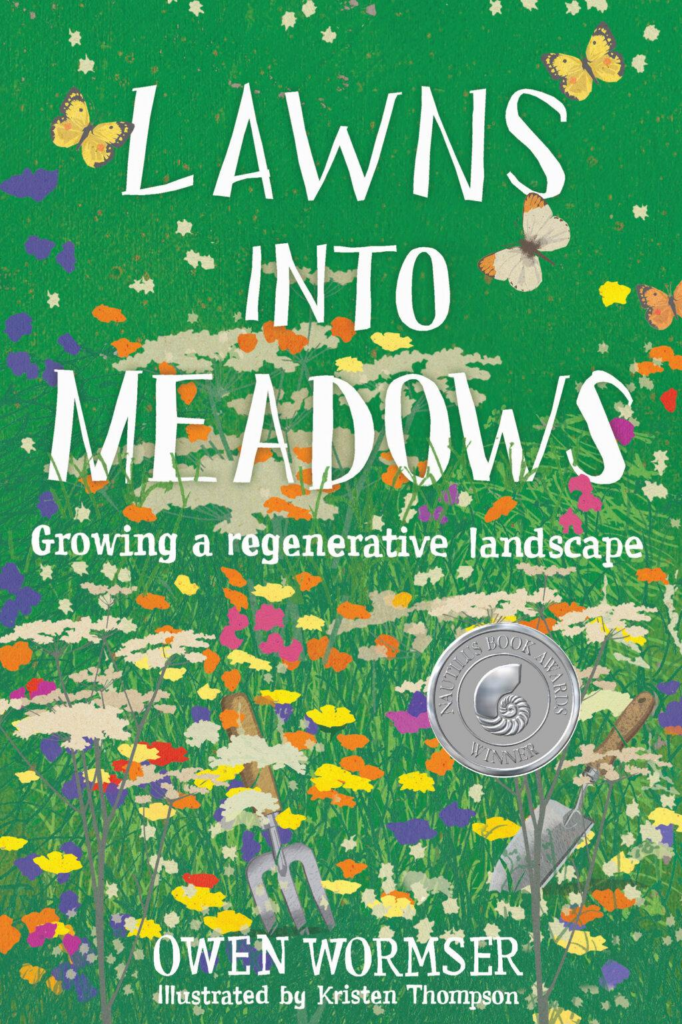A book review by Rick Phillips

Being a Wild Ones member, the book Lawns into Meadows, by Owen Wormser, caught my eye immediately. And with an author named Wormser, you would think this guy must really know soil and plants! Wormser is a landscape architect and horticulturalist who grew up off the grid in Maine and now lives and works in western Massachusetts. His specialty is regenerative landscape design.
The book begins with chapters on the negative features of lawns and the beauty and benefits of a natural landscape (in the mold of Doug Tallamy, professor of entomology and author of Nature’s Best Hope, among other books). On the negative side, we all know how lawns require lots of water, pesticides, herbicides, and constant mowing that produces air pollution. We also know the positives of how a yard covered with native plants can reduce water consumption, provide host plants for insects, feed pollinators and provide a scene of natural beauty.
Wormser gives advice on assessing your soil type and checking its ability to drain, which can impact your choice of plants. He takes you through several projects from beginning to end, including the pitfalls encountered, as his skill level as a meadow designer has increased. The use of seeds versus plugs is covered in detail.
There is a chapter on grasses and forbs that do well in a lawn meadow environment. While the plants on the list are native to the Massachusetts area, a large number are also native to the Front Range. Some of the plants listed, like purple coneflower (Echinacea purpurea) and rattlesnake master (Eryngium yuccifolium) are not Colorado natives, but it doesn’t hurt to have a few non-natives in your garden (author’s opinion, obviously)! After all, our guru Doug Tallamy says to strive for at least 70% native species in your garden. And who can resist a purple coneflower, which has both pollination and medicinal benefits?

Photo courtesy Sally and Andy Wasowski, Lady Bird Johnson Wildflower Center
Curious to learn more about transforming your garden into a habitat with Colorado native wildflowers, grasses, shrubs, and trees? Check out our native gardening toolkit, register for an upcoming event, subscribe to our newsletter, and/or become a member – if you’re not one already!
